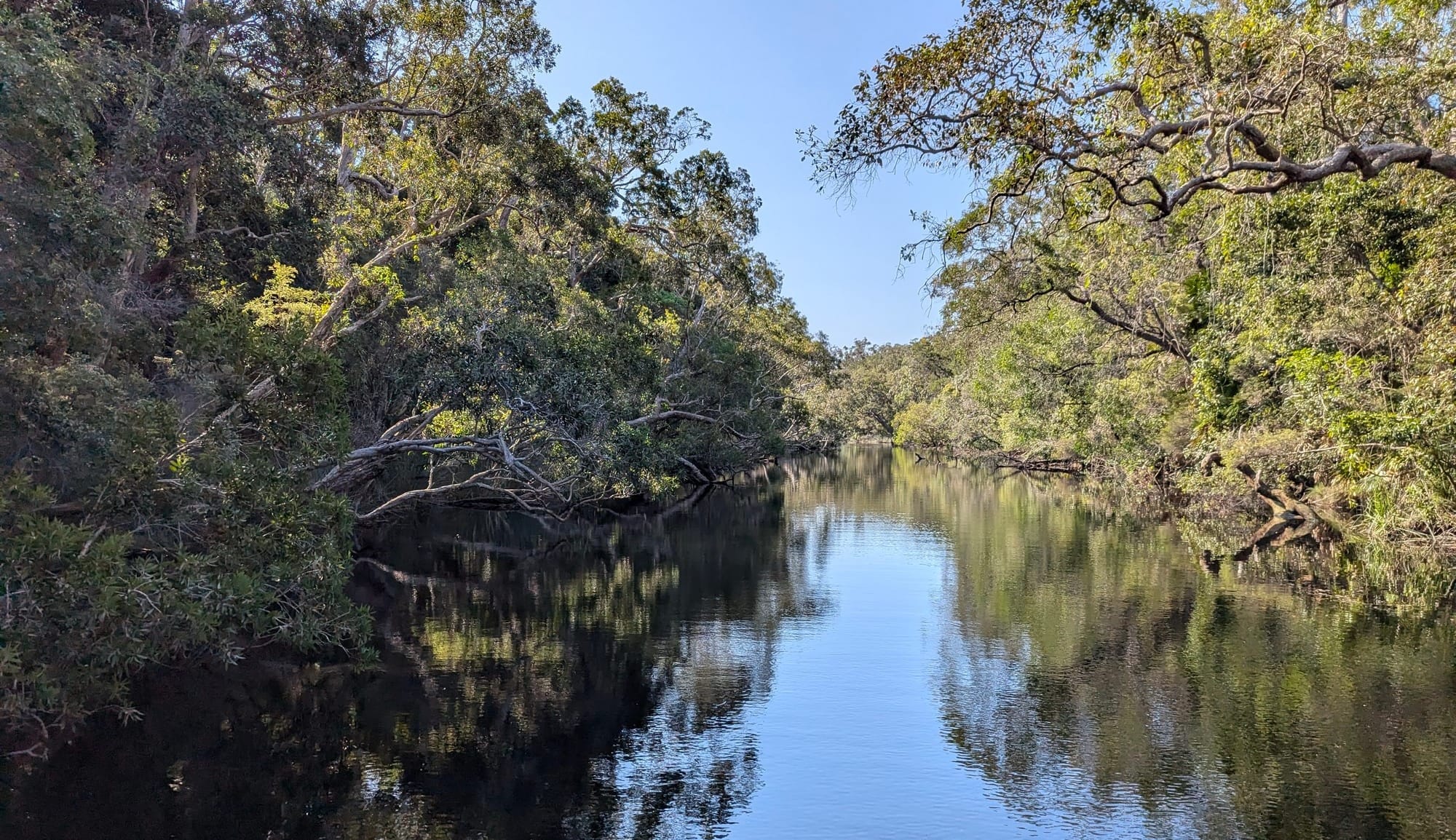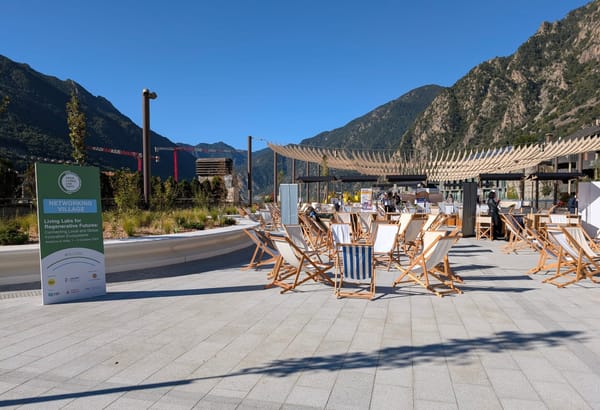Exploring the intersection of systemic investment, place-based capital, community finance and social innovation
Funding and frameworks for a world in transition - session recording, reflections and exploration

In March I hosted a a timely exploration of a range of approaches aimed at supporting us to tackle complex challenges faced by communities in Australia and Canada. I was delighted to bring together the excellent Geraldine Cahilll (visiting from Canada) with Meaghan Burkett, Kaj Löfgren and Ian Bird.
Together, we examined the rise of systemic investing, the growing importance of place-based capital, recent shifts in the Australian community philanthropy landscape and exciting social innovation and community finance developments in Canada, including the emerging mission innovation approach.
Here's the recording, courtesy of Monash Sustainable Development Institute (MSDI) who I work with:
Our (amazing) speakers were:
- Meaghan Burkett, Ethical Fields – place-based capital
- Kaj Löfgren, Regen Melbourne – systemic investing
- Geraldine Cahill, UpSocial Canada, Catalyst Community Finance & McMaster University – current social innovation patterns in Canada
- Ian Bird, Community Foundations Australia – innovation in community and philanthropic foundations

Reflections
For the last month or two I've been percollating, triangulating and exploring some of these ideas, and finally feeling like I have some reflections on our call and surrounding learnings.
Compatibility
When I first started thinking about this session, I honestly wasn't sure whether these ideas were inter-locking and compatible, or if they were verging off in different directions. You could spend a lifetime going deep into any of these topics, but I needed to hear from everyone to spot the interconnections.
My sense after the call is that these areas of systemic investing, community finance, and place-based capital are mutually reinforcing. I could be wrong, but I feel like place-based capital is an expansive framework to consider the various forms of 'capital' (human, social, financial, natural, intellectual, physical and digital) which can be brought into alignment towards shared goals. Systemic investing offers a deeper dive into the financial capital, and how various types of financial capital can be brought together and trained on those shared goals, recognising the interconnections and systemic approach needed, and explicitly aiming to invest in those too. Whereas community finance offers a range of vehicles, some of which would be needed for the others as investment and distribution vehicles.
Multisolving
Perhaps this is the bias that brought me to these various approaches in the first place, but what came through very strongly in the online session, was the recognition of the need to work on the leverage points which tackle multiple challenges at once. Each of the approaches considers how capital mobilisation explicitly recognises both the interconnections of challenges, but also the need for orchestration and intermediary organisation/functions to work between systems and organisations (what I recently wrote about as 'ecotone organising').
I recently dived into the Deep Transition Lab 'Transformative Investment' guides, which build on some of these themes, layering in transition theory which is useful in understanding the dynamics of systems change - such as the building up, breaking down, and ensuring of crucial linkages. Highly recommend this DTL guide and you may also find David Bent's write up useful as a taster.
Whilst clearly mobilising capital in this way is counter-BAU and hard to do, these approaches offer islands of coherence which are counter to the way that so many systems initiatives are funded at a community or regional level - bit part mosaics of short term project funding, sporadic philanthropic grants, or chronically underfunded volunteerism. Obviously there are some larger initiatives which buck this trend, such as the deep demonstrations and some European Horizon funded initiatives.
Implications for Lab Field
If you've been reading for awhile, you will likely know I have both past experience and current work which is engaged in the field of "Labs".
The approaches covered in this session have profound implications for the strategic design, structuring and financing of Lab approaches - whether they're Living Labs, Social Innovation Labs, or aligned systems change / systems innovation initiatives.
Perhaps the biggest take aways for me on the Lab front are:
- Initialising change work / Labs through a capital lens - collectively mapping and mobilising a range of capital towards common goals, with Labs becoming the 'operating system' (OS) to align, activate and sustain work, and being invested in as this core intermediary OS as a service rather than as a process or journey.
- Potential for existing Labs to establish their own Fund - many Labs are operating around the world, often on project budgets. In some cases, where the challenges they're working on are longer term, these approaches offer a vision through which they could mature their funding and operating model towards establishing a fund with aligned partners and stakeholders.
- Need for collective resources and support - clearly the above are a stretch for many Labs which already have a lot of demands just to facilitate change processes and support lab teams. To this end, there is a clear need for the development of collective resources and support services which Labs could work with (potentially enabled through a transformative investment from a Philanthropic party) to help them move towards financial independence and self-reliance over time.

Next Steps
Firstly, in a professional capacity - I intend to continue to explore these ideas through my work building a Living Lab Infrastructure and University Living Lab. I aim to extend Monash Uni's consideration of both the notions of blended funding (and value creation) as well as recognising and mobilising multiple forms of capital and the value of investing in intermediary functions.
I'm also continuing to actively engage with the Future of Labs Gathering community exploring the implications of these ideas in different international contexts. We're brewing some international collaboration, potentially with experimentation with financial structures in a range of contexts.
On the Community front (which may have a professional angle too), this year I've been exploring the potential for a small systemic investment fund in the Upper Yarra, underpinned by Place-based Capital approach.
- To this end I've been looking into existing investment vehicles in the UY, as well as exploring the Gumnut Funds from ACF, Named Funds with LMCF, and the changes in the Community Foundation landscape.
- I've been mapping different types of funding, financial instruments, and the functions they can be used for to better understand the must haves and sequencing of establishing a fund.
- Through the UY Local Development Project I'll be aiming to do some of Ethical Fields' training on Place-based Capital.
- I've also been talking with Meaghan & Ethical Fields about UY / Millgrove becoming a pilot place for the Local Investment Fund Mutual, which feels like an exciting example of the collective resources & support I mentioned above in regard to Labs.
Related links
- Community Foundations Australia - https://www.cfaustralia.org.au/
- Ethical Fields - ethicalfields.com
- Regen Melbourne - regen.melbourne
- Geraldine Cahill - geraldinecahill.com
- Catalyst Community Finance Canada catalystcommunityfinance.ca
- Monash Living Labs Infrastructure - monash.edu/research/living-labs
- Deep Transitions Lab - deeptransitions.net
- Transcap Initiative - transformation.capital
- Future of Labs Gathering - actionlab.ca/future-of-labs-gathering





